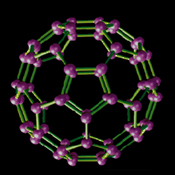Atomic - Molecular - Optical Physics

Faculty
The atomic, molecular, and optical physics program at LSU brings together the work of six faculty: Gaarde, Lee, Magana-Loaiza, Mauger, Rau and Schafer.
Ultrafast Atomic, Molecular and Optical Science
Gaarde, Mauger, and Schafer work on the interactions between ultrafast light pulses and atoms, molecules, and solids including strong-field ionization, high harmonic generation, and ultrafast transient absorption. The group also studies how electrons move inside molecules at the fastest time scales, change migration, and avenues by which these motions can be measured in labs using ultrashort light sources. Charge migration investigations are done in close collaboration with the Lopata group in the Department of Chemistry. Light sources of interest range from intense femtosecond infrared pulses to attosecond XUV and X-RAY sources. This group has strong ties to several experimental program in the United States and in Europe. Working with faculty members in this group are undergraduate and graduate students, and postdoctoral associates.
Quantum Optics and Quantum Information Science
Lee studies quantum optical interferometry for precision measurement and development of quantum information processing protocols. The latter includes reliable entanglement distribution for long-distance quantum communication using quantum repeaters, enhanced quantum memories using dynamical decoupling, and efficient single-photon sources/detectors.
Rau's primary research interests are in atomic physics, three-body quantum systems, mathematical techniques such as variational principles and integration of time-dependent operator equations, and quantum information. The last area is mainly the one of current research, especially the role of symmetries and their groups for few qubit and qudit problems, including entaglement, discord and other quantum correlations, their decay and possible remediation.
Experimental Quantum Photonics
The Magana-Loaiza group explores the fundamental and applied aspects of optical physics and quantum optics, investigating the novel properties of light and their potential for developing quantum technologies. This is a fast-developting research field with tremendous potential to impact different areas of sciend and engineering, such as quantum metrology, quantum sensing, and quantum information science. Some of the research includes (i) quantum state engineering and characgterization, (ii) quantum-enhanced metrology and imaging, (iii) high-dimensional quantum communications, (iv) control of multiphoton quantum dynamics in photonic networks, and (v) multiparticle quantum plasmonics.
